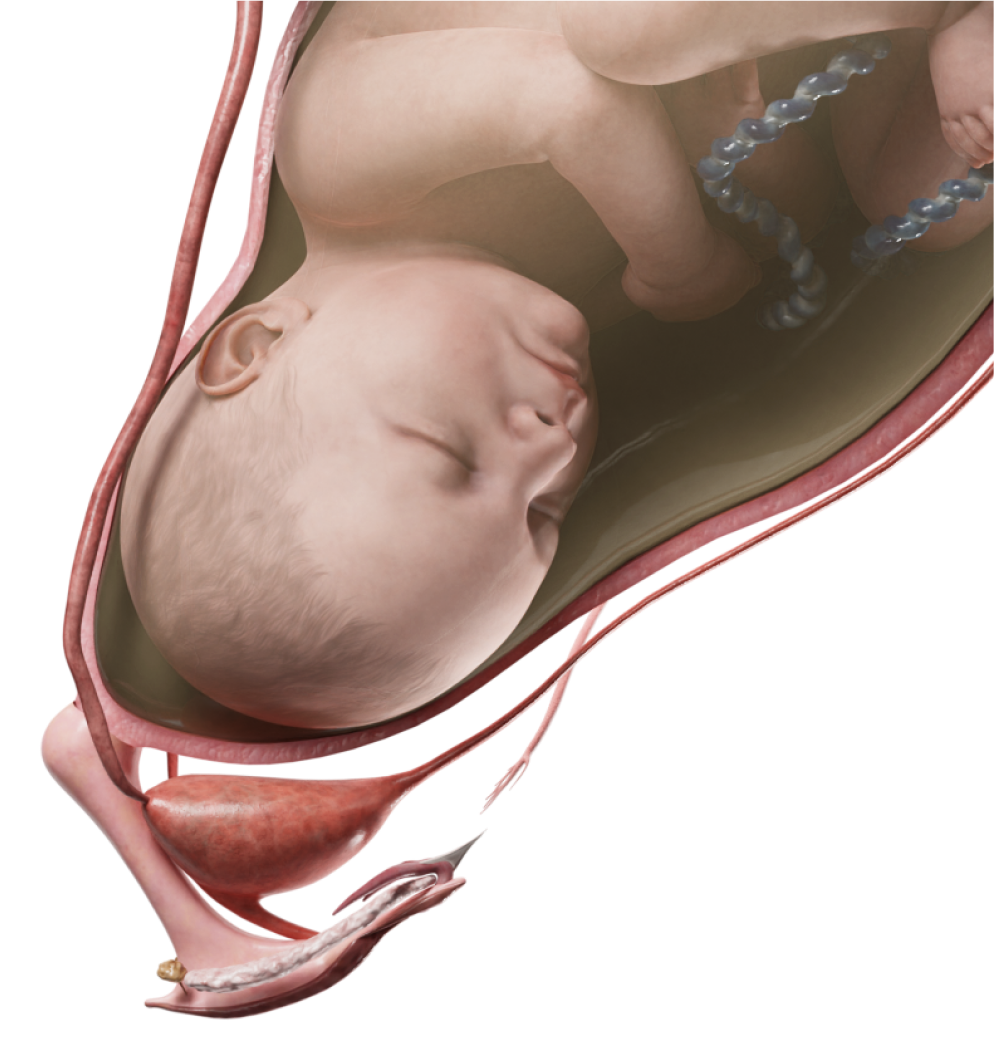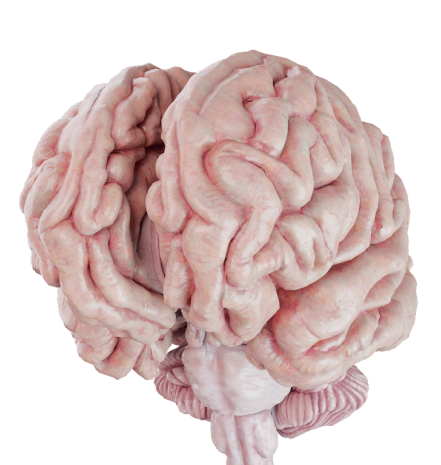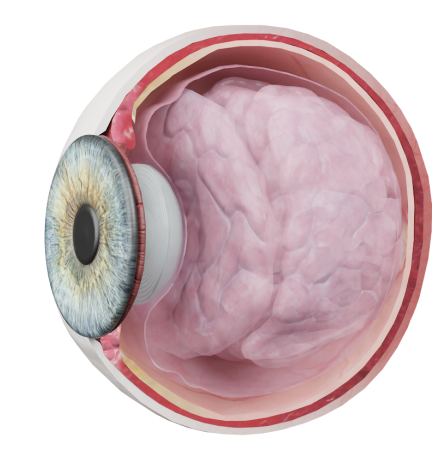Middle and internal ear injuries
Middle and internal ear injuries refer to structural and functional damage to these parts of the ear. The primary cause of these conditions is mechanical impact. This category of injuries leads to hearing impairment and/or vestibular disorders.
Traumatic perforation of the tympanic membrane is a rupture of the tissue that separates the external ear from the middle ear. It results from external factors and typically manifests as a hearing impairment.
Ossicular chain disruption includes various conditions that lead to loss of integrity between the auditory ossicles and, consequently, impaired sound transmission to the structures of the internal ear.
Hemotympanum is an accumulation of blood in the middle ear cavity behind an intact tympanic membrane.
A fracture of the petrous part of the temporal bone occurs when the bone and the structures inside its petrous part become mechanically damaged.
Posttraumatic mastoiditis is an inflammation of the mucosa and bone tissue of the mastoid process following an injury.
Classification
Middle ear injuries:
- central traumatic perforation of tympanic membrane;
- marginal traumatic perforation of tympanic membrane;
- total traumatic perforation of tympanic membrane;
- hemotympanum.
Ossicular chain disruption:
- separation of incudomallear joint;
- separation of incudostapedial joint;
- dislocation of stapes;
- fracture of malleus;
- fracture of incus;
- fracture of stapes.
Internal ear injuries:
- longitudinal fracture of petrous part of temporal bone;
- transverse fracture of petrous part of temporal bone.
Other conditions:
- posttraumatic mastoiditis.
Etiology
All middle and internal ear injuries occur as a result of various types of external mechanical impact, such as road traffic accidents. The ear structures can also become self-injured unintentionally, e.g., when individuals try to clean their ear canal with improvised aids, thereby inserting foreign objects deeper into the ear.
Perforation of the tympanic membrane and ossicular chain disruption can be caused by barotrauma, which is a sudden change in air pressure in the ear canal (as a result of blows to the ear, kisses, rapid descent or ascent when scuba diving). Another possible causative factor is a head injury from striking against a hard object. In extremely rare cases, dislocation of auditory ossicles occurs during middle ear surgery or paracentesis.
Hemotympanum can result from severe coughing or sneezing because of the rupture of small blood vessels in the tympanic mucosa. Moreover, it is commonly associated with temporal bone fractures and posterior nasal packing, which is performed to achieve hemostasis in cases of massive bleeding or adenotomy.
Temporal bone fractures are a special case of cranial base fractures. In addition to road accidents, the leading cause of these injuries is fights and beatings. Longitudinal fractures result from mechanical force being applied to the temporal region. Transverse fractures, in turn, are usually associated with blows to the frontal or occipital region.
It is worth noting that all the types of injuries given above can occur either independently or in combination with each other.
Posttraumatic mastoiditis can be an outcome of an incorrect or delayed diagnosis or a lack of proper treatment for the conditions mentioned above, allowing infectious pathogens to spread into the mastoid process from the nasopharynx or through a perforated tympanic membrane.
Anatomic Pathology
The tympanic membrane is considered perforated when all of its layers (epithelial, fibrous, and mucosal) are ruptured. On otoscopy, it appears as a tear with hemorrhages around the defect edges. Additionally, blood may be observed in the external auditory canal. If the temporal bone is damaged, cerebrospinal fluid (CSF) may also leak. To properly manage the condition, the location and size of the perforation are of particular importance. The central perforation is located in the pars tensa of the tympanic membrane, typically in the anteroinferior quadrant, without affecting the fibrocartilaginous ring. Marginal perforation mainly appears in the pars flaccida (the posterosuperior quadrant) and usually involves the fibrocartilaginous ring. The defects listed above can be either round or slit-shaped. Total perforation affects almost the entire tympanic membrane, leaving only small flaps of intact tissue along the periphery that become wrapped inside the middle ear cavity. Please note that even minor damage to the tympanic membrane can lead to dislocation of the auditory ossicles. For instance, traumatic perforation in the posterosuperior quadrant is often associated with an ossicular chain disruption, predominantly separation of the auditory ossicle joints.
Traumatic separation of the incudostapedial joint following a blunt or penetrating middle ear injury is the most common type of ossicular chain disruption. The incudomallear joint is better protected by the epitympanic recess, making ruptures a rare occasion. However, dislocation of this joint is rather frequent, being the second most common injury. The incus, the heaviest of the three auditory ossicles, is suspended by only two weak ligaments. Therefore, this bone is more susceptible to dislocations and fractures. The malleus, in turn, is highly protected and well-fixed since it is attached to the tympanic membrane, tensor tympani, and three suspensory ligaments (anterior, posterior, and superior). The stapes is also tightly attached to the vestibular window by the annular ligament.
Nevertheless, the stapes may become dislocated following a trauma, which is rather common.
Although rare, fractures can occur in any part of the ossicular chain, leading to the displacement of the intact chain to the attachment points of the ligaments. The most common sites for auditory ossicles fractures are the long limb of the incus and the two limbs of the stapes. Isolated cases of fracture of the malleus handle have also been described.
In cases of hemotympanum, blood accumulates in the tympanic cavity while the tympanic membrane remains intact. As a result, the tympanic membrane becomes purple-bluish and bulging. The sources of hemotympanum may vary. These include ruptured vessels of the tympanic mucosa and nasal or nasopharyngeal hemorrhages after surgery or nosebleeds. In the latter case, the blood enters the middle ear through the auditory tube.
Fractures of the petrous part of the temporal bone are usually classified according to the direction of the fracture plane relative to the bone axis:
- longitudinal fractures: along the axis of the petrous part of the temporal bone;
- transverse fractures: perpendicular to the axis of the petrous part of the temporal bone.
In clinical practice, these types of fractures may come up in various combinations. Longitudinal fractures comprise the majority (approximately 80 %) of all petrous temporal bone fractures. The internal ear remains intact, but other structures sustain significant damage. The fracture usually causes disruption of the ossicular chain, tympanic membrane rupture, and a fracture of the bony portion of the auditory canal. A facial nerve canal can also be injured, resulting in edema. Clinically, a cerebrospinal fluid leak through the ear (CSF otorrhea) and bloody otorrhea can be observed. In transverse fractures, the cochlea and semicircular canals are most prone to damage. An injury to these structures can lead to a perilymphatic fistula. Hemotympanum is also possible. The internal auditory canal, facial nerve canal, and tympanic membrane usually remain intact.
Posttraumatic mastoiditis typically occurs when the middle ear is injured and pathological matter (blood) is accumulated in the mastoid cells. This promotes inflammation, which spreads to the mucosa and bone tissue of the tympanic cavity and temporal bone. As the condition progresses, bone caries develops, which gives rise to sequesters surrounded by pus. Purulent otorrhoea may also be present in cases of tympanic membrane perforation. Even if the membrane remains intact, it bulges out and loses its normal anatomical landmarks. Mastoiditis may also be identified by sagging of the posterior wall of the ear canal.
Clinical Manifestations
The main clinical manifestations of all middle and internal ear injuries include hearing impairment, tinnitus, ear congestion, and pain at the moment an injury is inflicted and after it. Conductive hearing loss is typical for injuries involving the tympanic membrane and middle ear. Internal ear injuries, on the other hand, are associated with sensorineural or mixed hearing loss.
If the tympanic membrane is damaged, a small amount of blood may leak from the ear canal. The involvement of the middle ear leads to increased hemorrhagic discharge, hearing impairment in the affected ear (up to deafness), and pulsatile tinnitus that worsens when blowing the nose.
Symptoms of vestibular dysfunction, such as dizziness, nausea, vomiting, and unsteadiness, indicate dislocation of the stapes from the vestibular window. Labyrinthine disorders and deafness are characteristic of internal ear damage due to fractures of the temporal bone. These symptoms may also be accompanied by facial nerve palsy.
In longitudinal fractures, typical symptoms are mild conductive hearing loss, CSF or blood leakage through the ear canal (otorrhea) via the perforated tympanic membrane, delayed temporary facial nerve paresis, and short-term dizziness. Transverse fractures are characterized by more pronounced symptoms. These include sensorineural hearing loss (up to deafness), severe labyrinthine disorders (prolonged and intense dizziness, nausea, vomiting, etc.), spontaneous nystagmus beating to the intact ear, facial nerve palsy immediately after an injury, and CSF leak into the nasopharynx through the Eustachian tube. Battle sign, or postauricular hematomas, can be seen in both longitudinal and transverse fractures. Temporal bone fractures can also lead to early and late complications. The most serious ones include carotid artery and facial nerve injuries, mastoiditis, and meningitis.
In addition to general clinical manifestations of traumatic injury, posttraumatic mastoiditis is characterized by signs and symptoms of inflammation. Patients usually complain of a fever and intense throbbing pain behind the ear that intensifies on palpation of the mastoid process. Purulent otorrhoea may also be observed in cases of tympanic membrane perforation.
Diagnosis
The diagnosis of middle and internal ear injuries is primarily based on a thorough ENT examination, including otorhinolaryngoscopy and otomicroscopy, and a detailed medical history. The vestibular system and hearing should also be assessed. For this purpose, whisper test, audiometry, tympanometry, tuning fork tests, and vestibular testing are performed. A thin-section CT scan of the temporal bones is mandatory to determine the extent of an injury. In some cases, consulting a neurologist, neurosurgeon, and ophthalmologist is advisable. To assess facial nerve function, electroneuromyography may be considered.
Treatment
The most justified approach for treating tympanic membrane perforations is watchful waiting. This is explained by the fact that even large defects can heal spontaneously without any intervention. If it is suspected that the membrane was infected at the time of an injury, topical antibiotics in the form of ear drops are prescribed. To ensure successful healing, it is especially important to prevent secondary infections, keep the affected ear dry, and maintain the normal functioning of the Eustachian tube.
Surgical treatment (myringoplasty) should be considered if the perforation does not heal within 2–3 months or is located in the pars flaccida and affects the fibrocartilaginous ring. After the surgery, patients require regular follow-up visits to an ENT doctor for at least 2 years due to the risk of cholesteatoma. In cases of secondary infection, antibiotic therapy (systemic or topical) is needed.
Treatment for hemotympanum is usually conservative. It includes oral antibiotics and nasal decongestants to improve auditory tube function. For the same purpose, it is recommended to regularly self-inflate the Eustachian tubes by holding the nose and gently blowing. The outcome of the disease is usually favorable, as the blood typically lyzes within 7–10 days. However, sometimes a secondary infection may develop. In this case, a puncture of the tympanic membrane is performed to aspirate pathological contents from the tympanic cavity and identify a causative pathogen. Subsequently, antibiotic therapy is adjusted based on the culture results and antimicrobial susceptibility.
Repair of the ossicular chain involves surgical revision of the tympanic cavity and tympanoplasty, which are usually performed no earlier than 3–6 months after the injury. During this period, hearing may improve spontaneously due to scarring, making surgery unnecessary.
Treatment for temporal bone fractures includes both conservative and surgical management. The main components of pharmacotherapy are systemic antibiotics and corticosteroids. These medications help to prevent bacterial infection and delayed facial nerve paresis, respectively. As for surgical treatment, a watchful waiting approach usually proves to be reasonable. Early intervention is indicated in cases of facial nerve palsy, perilymphatic fistula with marked symptoms of vestibular dysfunction, or severe sensorineural hearing loss. At a later stage of the disease, surgical decompression of the facial nerve canal can be performed if the facial nerve becomes swollen despite conservative therapy. In cases of prolonged CSF leakage (for more than 14 days), surgical closure of the bone defect is required. Mastoidectomy involving a revision of the tympanic cavity and mastoid cells is an option to treat inflammatory complications such as mastoiditis and meningitis. To effectively manage these conditions, it is also crucial to prescribe broad-spectrum antibiotics.










